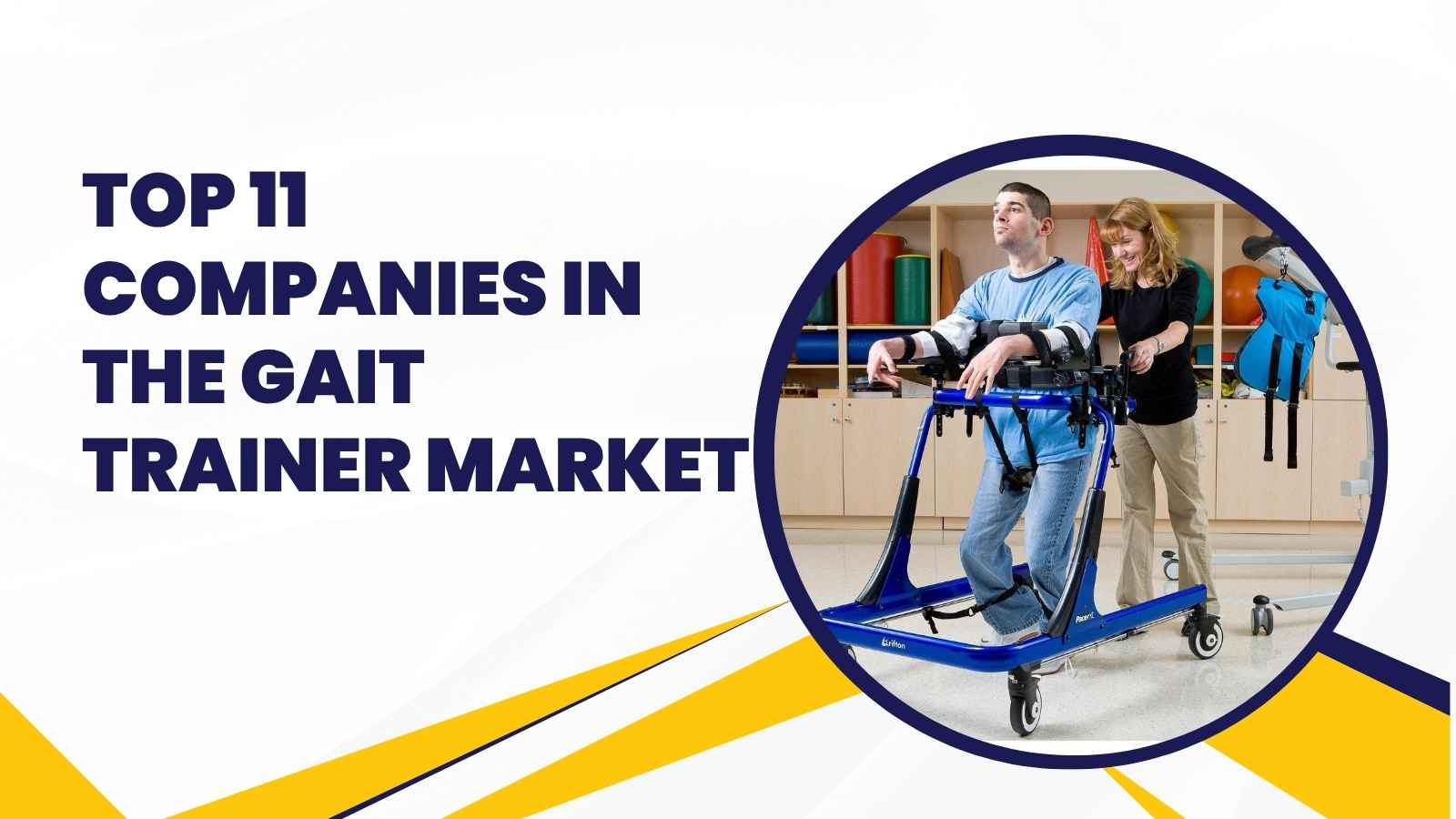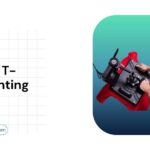Comparative Matrix of Key Products and Technologies
|
Company |
Primary Gait Trainer Product(s) |
Core Technology / Approach |
Target Patient Populations |
Key Differentiators |
|
Ottobock |
Nurmi Neo Kids Walker, FreeWalk Orthotic System |
Mechanical walkers, advanced orthotics, microprocessor control, AI integration (via R&D investments) |
Pediatric (Nurmi Neo), youths/adults with paralysis (FreeWalk), broader mobility impairments |
Comprehensive portfolio, strong global patient care network, strategic acquisitions, R&D in neural interfaces. |
|
Ekso Bionics |
EksoNR, Ekso Indego Therapy, Ekso Indego Personal |
Powered Exoskeletons, AI-driven software (GaitCoach), modular design, biofeedback |
Stroke, SCI, TBI, MS (EksoNR); Lower extremity weakness/paralysis (Indego Therapy/Personal) |
FDA-cleared for multiple conditions, personal home-use exoskeletons, Medicare reimbursement, AI/human motion modeling partnership. |
|
Lifeward (ReWalk Robotics) |
ReWalk Exoskeleton, ReStore Exo-Suit, AlterG Anti-Gravity Systems |
Powered Exoskeletons, Soft Exo-suits, Anti-Gravity Treadmills (NASA DAP tech), FES Cycling |
SCI (ReWalk), Stroke (ReStore), various mobility impairments, injury recovery, training (AlterG) |
Broadened portfolio via acquisition, FDA clearance for home-use exoskeleton, Medicare coverage, diverse rehabilitation modalities. |
|
Biodex Medical Systems |
Gait Trainer 3 |
Instrumented Treadmills, Music-Enhanced Gait Training, Audio/Visual Biofeedback, Body-Weight Support |
Older adults, orthopedic, stroke/TBI, SCI, amputation |
Evidence-based approach, quantifiable outcomes, neuroplasticity focus, comprehensive rehabilitation product suite. |
|
DIH Medical Group |
Lokomat, Andago, Erigo, C-Mill (Hocoma); GRAIL, CAREN, M-Gait (Motek) |
Robotic Gait Trainers (end-effector), Overground Gait Training, 3D Bodyweight Support, Virtual Reality, Biomechanical Labs |
Neurological disorders (stroke, SCI, Parkinson’s), orthopedic patients, research & academia |
Integrated ecosystem (clinical & research), systematic deployment partnerships, focus on intensive, reproducible therapy. |
|
Rifton Equipment |
Pacer Gait Trainer, E-Pacer, XL Pacer |
Highly customizable mechanical walkers, electric lift assistance |
Wide range of abilities, pediatric to large adults with motor limitations |
Deep specialization in adaptive equipment, extreme configurability, customer-driven design, U.S. manufacturing. |
|
Rex Bionics Ltd. |
REX |
Hands-free Robotic Exoskeleton, Linear Actuators, Proprietary Control Software |
Severe mobility impairments (SCI, stroke, TBI) |
Autonomous control, hands-free operation, high-acuity rehabilitation, structured exercise programs. |
|
CYBERDYNE Inc. |
HAL (Lower Limb, Single Joint, Lumbar), All-In-One Walker, Medicalcare Pit |
Hybrid Assistive Limb (HAL) technology, Bio-electrical signals, Cybernics concept, AI-robots |
Neurological impairments, mobility instability, labor support |
Cutting-edge bio-integration (human-machine fusion), regulatory adaptation for broader patient access (e.g., pediatric). |
|
Tyromotion GmbH |
Lexo, Tymo, Omego Plus |
Robotic Gait Training (end-effector), Sensor Technology, Virtual Reality, Gamification, FES |
All age groups, all rehab phases, mild to severe motor impairment |
Engagement-driven therapy, comprehensive lower extremity focus, scientifically proven technologies. |
|
Zebris Medical GmbH |
PhysioWalk, Rehawalk, FDM-T Treadmill System |
3D Motion Analysis, Force Measurement, Pressure Distribution, Perturbation Units, PhysioCoach (avatar) |
Physiotherapy, rehabilitation, acute care, foot orthopedics, sports |
Precision diagnostics, data-driven rehabilitation, quantifiable outcomes, “Quality Made in Germany.” |
|
Restorative Therapies, Inc. |
RT300 Series (SL, SLA, SLSA, LSA), RT600 FES, Xcite Therapy System |
Integrated Functional Electrical Stimulation (iFES), Massed-Practice Progressive Resistance, Real-time Biofeedback |
Neurological impairments (SCI, stroke, MS, TBI), critical illnesses |
Evidence-based FES therapy, extensive customization, home-use focus, lifetime clinical support. |
The gait trainer market is characterized by a diverse group of companies, each contributing unique technologies and strategic approaches to address the complex needs of mobility-impaired individuals. The following profiles detail the leading players, encompassing their corporate structure, product innovations, recent strategic moves, financial standing, and global reach.
Ottobock (Germany) https://www.ottobock.com/en-ex/home
Company Overview: Founded in Berlin, Germany, in 1919, Ottobock has evolved into a global healthtech leader, renowned for its customized prosthetic and orthotic mobility solutions. Headquartered in Duderstadt, Germany, the company operates an extensive global network, serving patients in over 50 countries through more than 400 patient care centers. Ottobock’s core mission is to empower individuals by promoting freedom of movement, enhancing their quality of life, and fostering independence, aligning with its self-proclaimed identity as a “Human Empowerment Company”.
Product Portfolio & Key Features:
Nurmi Neo Kids Walker: This is one of Ottobock’s most popular pediatric gait trainers, designed for daily use in various settings, including home and school. Its design prioritizes ease of use, featuring effortless turning and reversing capabilities for navigating tight spaces. The Nurmi Neo is highly customizable with a range of accessories, including different grip options (universal, extra high with forearm supports, mini grip bar), a friction brake for speed control, and an easily foldable seat for resting. It is available in multiple sizes to accommodate children’s growth and varying weight capacities, such as 55 lbs for Size 1 and 121 lbs for Size 3.
FreeWalk Orthotic System: While primarily an orthosis, the FreeWalk system significantly contributes to gait rehabilitation by enabling a more natural walking pattern for users with complete or incomplete leg paralysis. This lightweight and slim device incorporates a mechanism that locks the knee joint during the stance phase and unlocks it during the swing phase, allowing for free leg swing. It is designed for youths, adults, and mature adults suffering from conditions like stroke, multiple sclerosis, cerebral palsy, paraplegia, and other neurological disorders.
Other Products: Beyond direct gait trainers, Ottobock’s broader portfolio includes advanced prosthetics (e.g., the microprocessor-controlled Genium knee joint and the Evanto Prosthetic Foot), orthotics (such as the C-Brace mechatronic orthosis system), and a range of wheelchairs. The company also develops exoskeletons designed for ergonomic workplaces.
Recent Developments & Strategic Initiatives:
Acquisitions: Ottobock has actively pursued strategic acquisitions to expand its market presence and care network. In March 2023, it acquired Brillinger, a leading medical supply chain in Baden-Württemberg, Germany. This was followed by the acquisition of Sahva A/S, a prominent orthopedic technology provider in Denmark, in July 2024, aimed at strengthening its foothold in the Scandinavian market.
Product Launches: In May 2024, Ottobock launched the Evanto Prosthetic Foot, a mechanical foot designed to enhance mobility, stability, flexibility, and energy return for individuals with activity levels 2 to 4.
Regulatory & Reimbursement Successes: The company has successfully secured patient reimbursement for its Kenevo mechatronic knee joint in the USA and is set to make the C-Brace mechatronic orthosis system available in France via patient reimbursement from 2025. These achievements are crucial for expanding market access and product adoption.
Ekso Bionics (U.S.) – https://eksobionics.com/
Company Overview: Founded in 2005, Ekso Bionics Holdings, Inc. (NASDAQ: EKSO) is a prominent innovator in wearable robotics. The company specializes in developing advanced exoskeletons and robotic-assist devices for both medical and industrial applications. Headquartered in San Rafael, California, Ekso Bionics is dedicated to empowering individuals to regain mobility and overcome physical limitations.
Product Portfolio & Key Features:
EksoNR: This is a clinically validated rehabilitation exoskeleton. It is the only FDA-cleared exoskeleton for brain injury and Multiple Sclerosis (MS), and it was the first exoskeleton to receive FDA clearance for both stroke and spinal cord injury (SCI). EksoNR assists patients in standing and walking during rehabilitation, providing support to the trunk and legs to promote correct movement patterns. It offers adaptive gait training, real-time feedback, and is controlled via a touchscreen interface, allowing clinicians to set goals and adjust assistance levels. The integrated GaitCoach software, released in late 2023, further enhances therapist guidance.
Ekso Indego Therapy: A lightweight, modular, and quickly adjustable lower-limb powered exoskeleton designed for individualized gait therapy. It targets patients with lower extremity weakness or paralysis resulting from SCI or stroke. The system allows for progression from full robotic assistance to patient-initiated steps with robotic support only when necessary. Key features include adjustable modularity for custom fitting, distinct software programs for varied therapy progression, joint-specific assistance, wireless controls, and multimodal feedback (auditory, vibratory, visual) to ensure continuous communication with the user.
Ekso Indego Personal: This modular exoskeleton is designed for home and community use, enabling individuals paralyzed from SCI (levels T3-L5) to stand and walk independently. Weighing only 29 lbs, it is the lightest exoskeleton available in its class, designed for ease of setup and intuitive operation, facilitating a quick learning curve for users.
Recent Developments & Strategic Initiatives:
Regulatory Milestones: Ekso Bionics achieved a significant regulatory milestone in June 2021 by receiving FDA approval for EksoNR for use with MS patients, making it the first and only exoskeleton with this specific indication.
Reimbursement Breakthrough: A pivotal development occurred on April 1, 2024, when the Centers for Medicare & Medicaid Services (CMS) finalized a reimbursement rate for the Ekso Indego Personal. This decision provides eligible Medicare beneficiaries with SCI meaningful access to this technology, significantly improving independence and health outcomes by enabling insurance coverage.
Strategic Partnerships: Ekso Bionics was accepted into the NVIDIA Connect program, a collaboration aimed at leveraging NVIDIA’s tools and resources to build a proprietary foundation model for human motion. This initiative seeks to develop and integrate new artificial intelligence (AI) capabilities across Ekso Bionics’ portfolio of Enterprise Health and Personal Health devices.
Lifeward (formerly ReWalk Robotics) (U.S./Israel)
Company Overview: Operating as Lifeward, formerly known as ReWalk Robotics Ltd., this company is a global leader in innovative medical technology. Its core mission is to relentlessly drive innovation to transform the lives of individuals facing physical limitations or disabilities, enabling them to pursue their passions. Lifeward maintains operations across the United States, Israel, and Germany.
Product Portfolio & Key Features: Lifeward offers a diversified portfolio of products designed to elevate the standard of care in rehabilitation.
ReWalk Exoskeleton (e.g., ReWalk Personal 6.0): This is a wearable robotic exoskeleton engineered to provide powered hip and knee motion. It enables individuals with spinal cord injury (SCI), specifically those with T4-L5 levels of injury, to stand upright, walk, turn, and navigate stairs and curbs. The system facilitates user-initiated mobility through the integration of a wearable brace, a computer-based control system, and motion sensors, all designed to mimic natural gait patterns. Enhanced features include crutch control for improved ease of use, customizable walking speeds for various environments, smartwatch integration, and a MyReWalk App for goal setting and progress tracking.
ReStore Exo-Suit: This powered, lightweight soft exo-suit is specifically developed for single-leg rehabilitation, primarily targeting individuals with lower limb disability resulting from stroke. The ReStore combines natural movements with adaptive plantarflexion and dorsiflexion assistance, dynamically synchronizing with the patient’s own gait. It provides individualized assistance levels and real-time feedback, enabling therapists to optimize sessions and monitor patient progress.
AlterG Anti-Gravity Systems (acquired): A key addition to Lifeward’s portfolio, these systems utilize patented NASA Differential Air Pressure (DAP) technology. This innovative technology uniformly reduces gravitational load and body weight in precise 1% increments, allowing patients to move without pain and with reduced impact. The AlterG treadmills facilitate early partial weight-bearing, enhance neuromuscular and proprioceptive retraining, and improve balance and confidence. The product line includes models such as the NEO (entry-level unweighting system), NEO+ (flagship rehabilitation model), and PRO (designed for elite sports training).
Biodex Medical Systems (U.S.)
Company Overview: Biodex Medical Systems, Inc. stands on a foundation of over 60 years of manufacturing and engineering excellence. The company’s mission is to deliver innovative solutions and dedicated customer support to medical facilities and wellness centers globally, focusing on advancing treatment innovation across physical medicine and medical imaging categories. Biodex is headquartered in Shirley, New York.
Product Portfolio & Key Features: Biodex offers a comprehensive range of products for physical medicine and rehabilitation.
Gait Trainer 3: This advanced treadmill features an instrumented deck capable of precisely monitoring and recording key gait parameters, including step length, step speed, and step symmetry. It integrates audio cueing, visual biofeedback, and music-assisted therapy, which are designed to promote neuroplasticity and guide patients towards correct gait patterns. The Gait Trainer 3 is versatile, catering to a wide array of patients, including older adults, orthopedic patients, and individuals recovering from stroke/traumatic brain injury (TBI), spinal cord injury (SCI), or lower extremity amputation.
Other Rehabilitation Products:
Isokinetic Systems: Recognized as the industry standard for generating reliable and repeatable objective data to drive performance and support rehabilitation protocols and research. These systems are utilized by leading clinics, professional sports teams, and research facilities worldwide.
Balance Systems: Devices designed for comprehensive balance testing and training, helping to objectively identify weaknesses and customize programs for diverse patient populations, from athletes to older adults.
Body-Weight Supported Training (e.g., NxStep Unweighing System): Solutions that reduce patient body weight using single-point suspension, facilitating proper gait mechanics and assisting healthcare professionals with seated-to-standing transitions, while optimizing floor space and staff resources.
Cycles and Ergometers: Elliptical cross-training products that prioritize patient comfort, safety, and stability through semi-recumbent positioning, suitable for active-passive movement training and individuals with physical limitations.
- DIH Medical Group (Switzerland)
Company Overview: DIH Medical is a global provider of advanced rehabilitation solutions, committed to enhancing the lives of millions worldwide through the application of robotics in physical rehabilitation. Headquartered in Zurich, Switzerland, and Houten, Netherlands, DIH operates on a “hub-and-spoke” business model, ensuring both global reach and local presence. The company aims to support physiotherapists and clinicians in effectively treating a growing patient population, particularly in light of an aging global demographic and increasing rehabilitation needs.
Product Portfolio & Key Features: DIH Medical integrates a diverse range of products from its key brands, including Hocoma and Motek, catering to both clinical and research markets.
Hocoma Solutions (for Hospital Market – Rehabilitation Hospitals and Outpatient Clinics):
Gait & Balance Rehabilitation:
- Lokomat®: A leading robotic rehabilitation device that provides intensive, highly repetitive, and physiologically accurate gait movement training. It features modular components like the FreeD Module and Pediatric Module, making it adaptable for various patient needs. Clinicians report that Lokomat enables patients to walk for extended periods (e.g., 30-40 minutes), with the robot and treadmill dynamically adjusting speed based on patient effort, enhancing motivation.
- Andago®: This device facilitates safe and free overground gait training, offering crucial flexibility for patients transitioning from robot-aided training to real-world walking. Its ease of use helps prepare patients for diverse everyday activities.
- Erigo®: Designed for early mobilization, Erigo combines gradual verticalization with leg mobilization and intensive sensorimotor stimulation through cyclic leg loading.
- C-Mill: Used for the comprehensive evaluation and training of balance and gait, contributing significantly to patient recovery.
Rifton Equipment (U.S.)
Company Overview: Established in 1977, Rifton Equipment is a U.S.-based company specializing in the design and manufacture of high-quality adaptive equipment for individuals with disabilities. The company emphasizes durability and meticulous design, with its manufacturing facilities located in New York and Pennsylvania. Rifton’s commitment to quality is evident throughout its product lifecycle, from design to delivery and service.
Product Portfolio & Key Features: Rifton offers a range of gait trainers designed for versatility and adaptability.
Pacer Gait Trainer: This therapist-inspired gait training system is highly configurable to accommodate clients of various abilities and in diverse environments. It is available in multiple sizes, from Mini to XL, ensuring a suitable fit for a broad spectrum of users. The Pacer offers both dynamic and standard upper frames, which can be paired with standard, utility, or treadmill/stability bases. Its features include easy height adjustment, versatile settings, quick and easy positioning, and smooth transfers. A wide array of accessories, such as arm prompts, chest pads, pelvic support, and an odometer, allow for precise customization to meet individual client needs.
E-Pacer: This device combines the powerful electric lift and secure body support features of Rifton’s TRAM system with the gait training capabilities of the classic Pacer. The E-Pacer is designed for effortless sit-to-stand transfers, significantly easing the burden on caregivers during gait training sessions. It provides exceptional stability, making it particularly beneficial for heavier or taller clients, supporting users up to 6’5″ in height and 350 lbs in weight. Key features include expandable legs for wider step width or closer positioning to wheelchairs, and an optional built-in scale with the Gait Tracker mobile app to monitor weight-bearing progress.
Rex Bionics Ltd. (New Zealand)
Company Overview: Founded in 2007 in Auckland, New Zealand, by two robotics engineers, Rex Bionics Ltd. is a pioneer in the field of robotic exoskeletons. The company’s core vision is to provide significant relief from the challenges of severe neurological conditions and to enhance mobility for wheelchair users. Rex Bionics actively collaborates with physiotherapists to advance the concept and practice of Robot-Assisted Physiotherapy (RAP).
Product Portfolio & Key Features:
REX: This is Rex Bionics’ flagship product: a hands-free robotic device designed for rehabilitation. It uniquely allows individuals with mobility impairments, including those with more severe disabilities, to stand and walk without relying on their hands for support.
Technology: REX incorporates 10 custom-designed linear actuators for motion generation, a custom carbon fiber pelvis for structural support and weight minimization, and 27 onboard microprocessors controlled by half a million lines of proprietary code to ensure stability throughout the movement cycle. The device features adjustable leg lengths to precisely align with user joints and is powered by rechargeable lithium-polymer batteries, providing approximately 60 minutes of use per battery.
Features: REX offers autonomous control, allowing new users to begin walking within minutes. It is highly maneuverable, capable of fully automated movements including forwards, backwards, sideways, and turning. The device is designed for rapid adjustment to individual measurements, facilitating high patient turnover in clinical settings.
REXERCISES: The system provides a wide array of structured and reproducible functional exercise programs tailored for patients with mobility impairments. These exercises include squats, lunges, sit-to-stand transitions, leg swings, and stretches, all designed to be safe and effective.
Target Users: REX is widely accessible and has been successfully used by individuals with severe disabilities. It is registered in the U.S. for use under the supervision of a healthcare professional. Clinical applications extend to rehabilitation programs for patients with spinal cord injury and hemiplegia resulting from stroke or traumatic brain injury.
CYBERDYNE Inc. (Japan)
Company Overview: Established in June 2004 as a university venture by Professor Yoshiyuki Sankai of the University of Tsukuba, CYBERDYNE Inc. is dedicated to creating an ideal future through its innovative Cybernics systems. Headquartered in Tsukuba, Ibaraki Prefecture, Japan, the company’s foundational concept, “Cybernics,” represents a fusion of diverse fields including neuroscience, AI, robotics, and information systems. This interdisciplinary approach aims to combine human capabilities with AI-robots and information systems for various applications.
Product Portfolio & Key Features: CYBERDYNE offers a range of advanced robotic and gait training equipment.
- HAL (Hybrid Assistive Limb) Devices: HAL is a groundbreaking technology designed to improve, support, enhance, and even regenerate the wearer’s physical functions based on their intentions. This is achieved by detecting faint bio-electrical signals from the wearer’s skin.
- HAL for Medical Use Lower Limb Type: Available in both adult and small models, this device assists with lower limb mobility.
- HAL Single Joint Type: Designed for rehabilitation of individual joints.
- HAL Lumbar Type: Provides support for caregivers and care-receivers, also used for labor support in industrial settings.
Tyromotion GmbH (Austria)
Company Overview: Founded in 2007 in Graz, Austria, by David Ram and Alexander Kollreider, Tyromotion GmbH is a leading manufacturer of technology-based therapeutic devices. The company’s fundamental mission is to enhance the independence and quality of life for individuals with mobility challenges through innovative products and comprehensive solutions for physicians and therapists. Tyromotion’s therapeutic philosophy, termed “TyroTherapy,” emphasizes the critical components of intensity, dose, and motivation to achieve optimal rehabilitation outcomes.
Product Portfolio & Key Features: Tyromotion offers a comprehensive range of therapy devices designed for both upper and lower extremity rehabilitation, applicable across all phases of recovery and for various age groups.
- Lexo: This robotic gait trainer is designed for gait and locomotion therapy. It is characterized by its fast setup time, ability to promote high patient activity, and effective trunk support. Lexo is suitable for a wide range of patients, including children, adolescents, and adults, and emphasizes end-effector-based gait training principles.
- Tymo: A versatile measurement and therapy system focused on balance training and postural control. Tymo is compact yet powerful, offering a wide array of therapy options beyond just standing positions, including sitting and lunge exercises. It incorporates posturography for objective balance analysis, detecting weight shifting and determining the center of pressure to provide insights into balance, stability, and symmetry.
- Omego Plus: More than a traditional therapy bike, Omego Plus is a comprehensive gait training device that integrates multiple training modalities. These include uni- and bilateral leg training, leg press exercises, stepper functions, cycling, and foot lift training, all within a single unit.
- Other Products: Tyromotion’s broader portfolio includes AMADEO (finger-hand rehabilitation), PABLO (hand-arm rehabilitation, also with a lower extremity version for gait analysis), DIEGO (shoulder-arm rehabilitation with a virtual reality option), MYRO (interactive and task-specific therapy), TYROSTATION (a versatile therapy station), and the MTT-Line (medical training therapy for major muscle groups). The company also offers Maya, a patient management software for streamlined administration.
Zebris Medical GmbH (Germany)
Company Overview: Zebris Medical GmbH is an innovative technology company with over three decades of experience in biomechanics. Headquartered in Isny im Allgäu and Seltmans, Germany, the company specializes in the development, manufacture, and global distribution of high-precision measurement and therapy systems. Zebris operates across four main business areas: medicine, veterinary medicine, dentistry, and sports. The company emphasizes “Quality Made in Germany,” with its measuring systems manufactured to stringent quality standards (DIN EN ISO 13485:2016) and undergoing annual certification.
Product Portfolio & Key Features: Zebris offers a range of gait training and analysis systems.
- PhysioWalk®: An innovative gait trainer solution designed for physiotherapy, rehabilitation, and acute care clinics, with availability expected in Q2 2025. It comes in three flexible variants (1.0, 1.2, 1.8), each offering adjustable speed and running surface dimensions. Key features include touch-function control panels, light barriers for fall protection, and height-adjustable handrails. Optional modules enhance its functionality, such as swiveling and adjustable forearm supports, pressure distribution sensors integrated under the running surface with accompanying software, and an innovative perturbation unit for highly effective gait training. The PhysioCoach® module provides guided training with an exercise avatar.
- Rehawalk®: A dedicated system for gait analysis and training.
- FDM-T Treadmill System for Gait Analysis: These are instrumented treadmills equipped with pressure distribution measurement systems, enabling detailed analysis of stance, gait, and roll-off patterns.
- Other Systems: Zebris’s broader product line includes Pressure Distribution Plates, CanidGait® (for canine gait analysis), JMA (for jaw registration in dentistry), balori® e-coordination training, and BALANCECOACH iQ.
Restorative Therapies, Inc. (U.S.)
Company Overview: Restorative Therapies Inc. (RTI) was established in 2004 through a collaborative effort of researchers, engineers, and patient advocates, initially focused on developing and promoting Advanced Rehabilitation Technologies (ART). The company’s history is notably linked to Dr. John W. McDonald of Johns Hopkins University, an original founder, whose work with Christopher Reeve utilizing intensive Functional Electrical Stimulation (FES) demonstrated significant functional and health improvements. This inspired a vision to expand FES therapy systems to both clinical and home settings. RTI’s mission is to help individuals with neurological impairments or critical illnesses achieve their full recovery potential, with a vision to make its integrated FES products widely accessible.
Product Portfolio & Key Features: RTI specializes in physician-prescribed, FDA Class II medical devices that integrate FES with massed-practice progressive resistance activities to produce patterned muscle contractions.
RT300 Series: This series comprises FES ergometers and cycles designed for neurological rehabilitation, targeting conditions such as spinal cord injury (SCI), stroke, multiple sclerosis (MS), and traumatic brain injury (TBI). The RT300 is adaptable for ages 4 and up and can be used in both clinical and home settings.
Key Features: Integrated FES technology combined with motor assistance/resistance, capable of delivering over 300 muscle contractions in under 10 minutes to up to 12 muscle groups (arms, legs, core). The software provides real-time biofeedback, data-tracking, and sophisticated control algorithms. It offers patented Active Spasm Management, remote clinician monitoring, auto-progression, customizable stimulation settings, and multiple programs (interval, gait, isokinetic). It also features automated therapy transitions and on-screen visual feedback with an avatar. RTI is noted as the only company offering Wide-Pulse Stimulation.
Specific Models: Includes RT300-SL (Leg Ergometer), RT300-SLA (Leg Cycle with Arm Cycling), RT300-SLSA (FES Ergometer for Arms, Legs & Trunk), and RT300-LSA (Leg Cycle with FES for Arms & Trunk). These models are available for both VA Patient and VA Clinic use.
RT600 FES: A step and stand rehabilitation therapy system designed to stimulate up to 16 muscle groups in the legs and trunk. It aims to increase heart rate, muscle mass, and improve positive mental attitude.
Xcite Therapy System: A patterned Functional Electrical Stimulator with 6 channels for upper extremity, lower extremity, and general activities, available for clinical and home-based neurorehabilitation.











